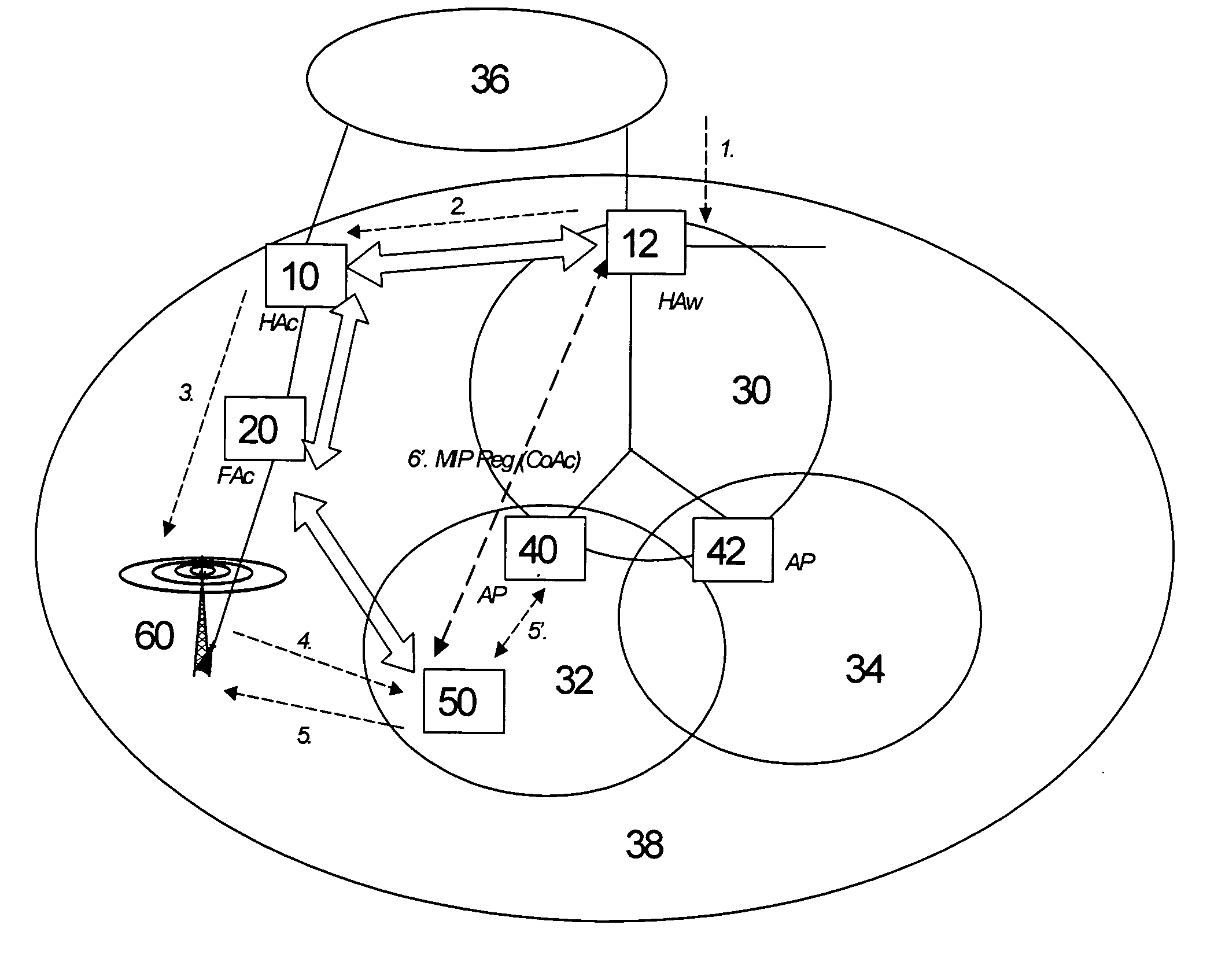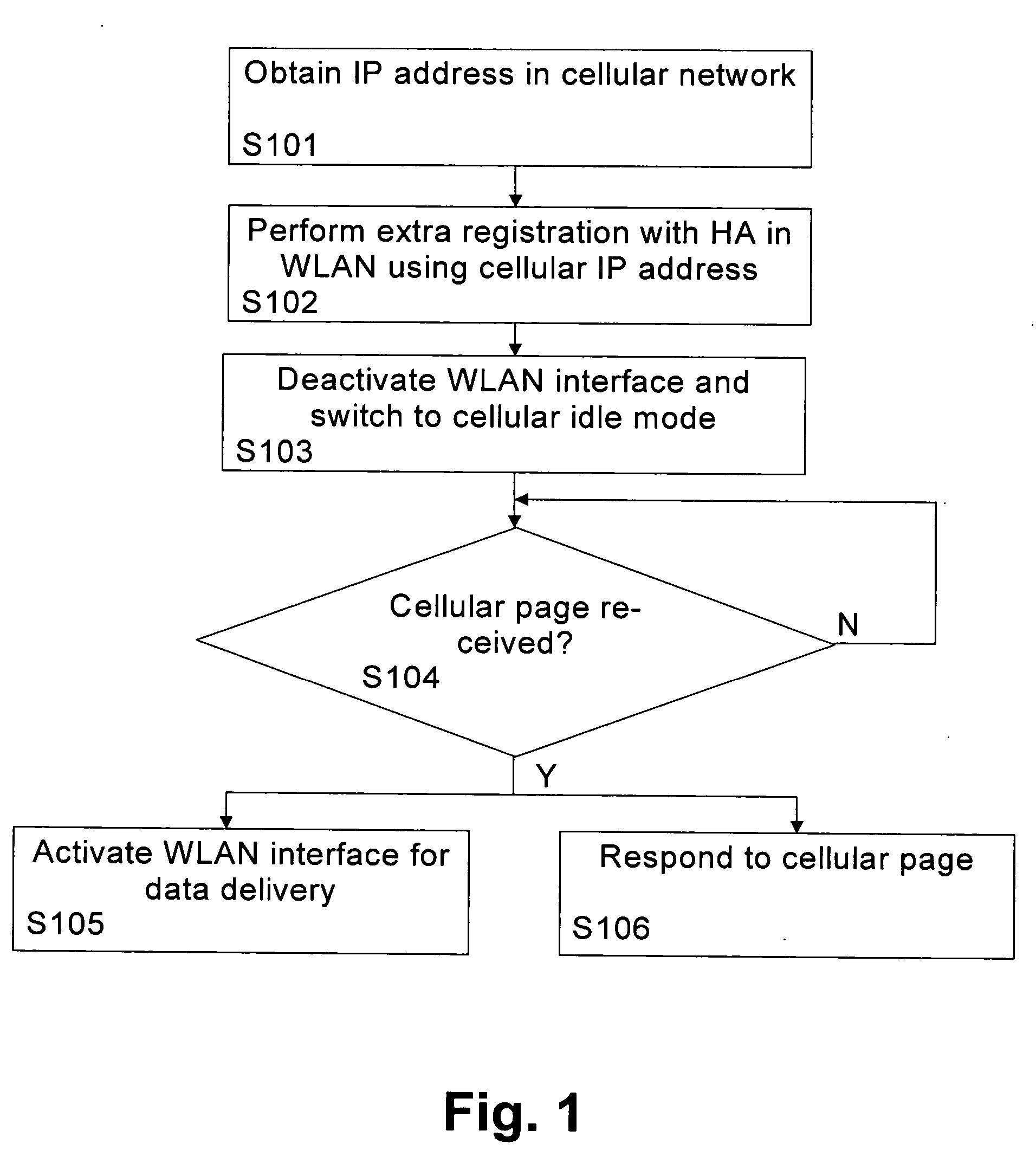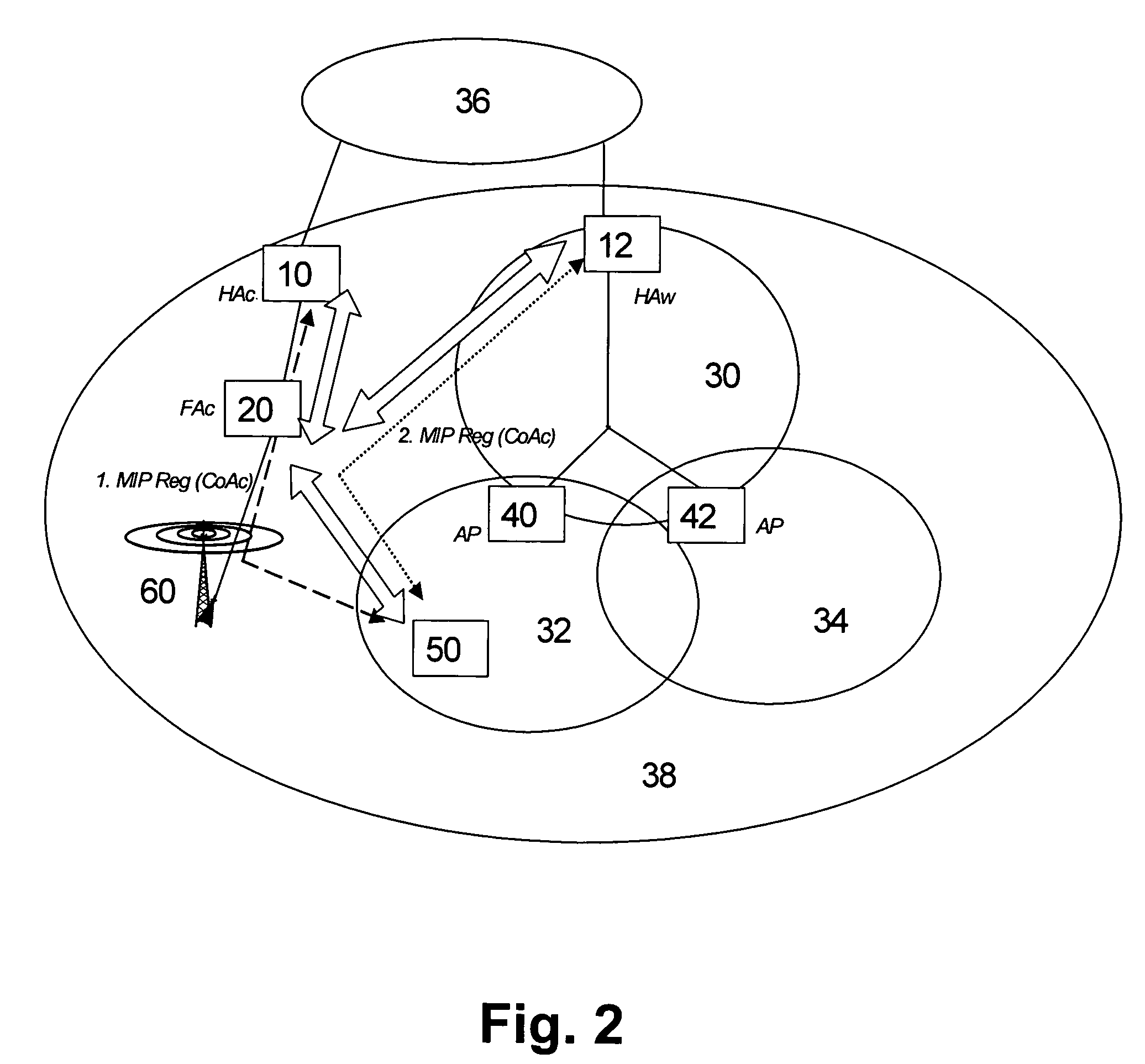Delivering data to a mobile node in idle mode
a mobile node and idle mode technology, applied in the field of delivering data and to a mobile node, can solve the problems of draining power resources in the terminal device, .11g does not provide any dormancy capability or sleep mode, and each wireless technology has its own technical capabilities and limitations, so as to achieve the effect of increasing power efficiency
- Summary
- Abstract
- Description
- Claims
- Application Information
AI Technical Summary
Benefits of technology
Problems solved by technology
Method used
Image
Examples
Embodiment Construction
[0038] The preferred embodiments will now be described on the basis of an implementation for a dual-mode terminal device (WLAN / cellular), which can receive data via a PS cellular network and via a WLAN. It is first described how an additional Mobile IP registration is done with an appropriate CoA to deliver the packets from the HA in the WLAN to a terminal roaming in the cellular network. Then, a procedure is described for session initiation / delivery through the WLAN network to a cellular dormant dual-mode terminal.
[0039] The WLAN interface of the terminal device has a Mobile IP client, and is able to register its current CoA in the WLAN HA. The cellular interface of the terminal also gets an IP address from the cellular network. The cellular network could be any packet-switched or IP-based network. It may have Mobile IP agents, e.g. it may be 3GPP2 network or 3GPP network with FA functionality on a Gateway GPRS (General Packet Radio Services) Support Node (GGSN). It may as well no...
PUM
 Login to View More
Login to View More Abstract
Description
Claims
Application Information
 Login to View More
Login to View More - R&D
- Intellectual Property
- Life Sciences
- Materials
- Tech Scout
- Unparalleled Data Quality
- Higher Quality Content
- 60% Fewer Hallucinations
Browse by: Latest US Patents, China's latest patents, Technical Efficacy Thesaurus, Application Domain, Technology Topic, Popular Technical Reports.
© 2025 PatSnap. All rights reserved.Legal|Privacy policy|Modern Slavery Act Transparency Statement|Sitemap|About US| Contact US: help@patsnap.com



